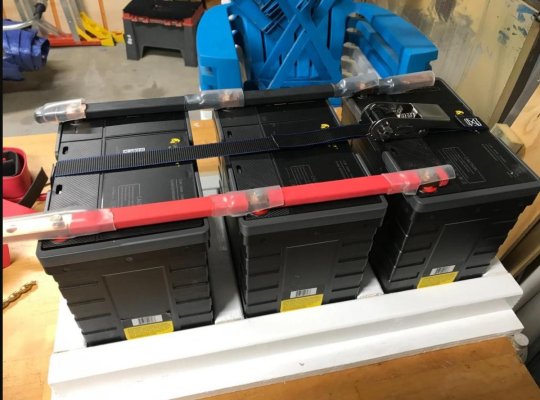ksanders #84
I have to disagree with you on this point. As a LA battery bank is charged, the charging sources will supply about 80% of the discharged capacity during the bulk phase. The charge regulator (inverter/charger, solar, wind, alternator, etc.) will then place the charging source in CV and the charging current will taper off as the resistance of the battery bank increases as it is recharged. That is why it takes an inordinate amount of time to finish the last 20% of recharging a LA bank.
With an LFP bank, the charging source will not, if set up properly, shift from CC > CV. It will CV for the entire charging cycle. The downshift in recharge rate of a LA bank just won't occur. So an LFP bank will recharge significantly quicker than a similarly discharged LA bank.
Exactly. This is where you get faster recharge time, even without increasing charger capacity.
Now if you never charge you LA batteries past bulk then this won’t matter. But then you will be creating a different problem with sulfation.
You guys are assuming that you are actually charging beyond 80% which most folks on the hook with FLA batteries do not do if they understand FLA charging.
My argument is valid electrically. If you operatye your FLA bank in the approx 50-80% SOC range most will never be able to exceed the charge capabilities of a reasonable FLA bank using off the shelf charging equipment.
BTW my crown 430 AH batteries recommend a maximum of 100A charge current. That means that two parallel strings are 200A. Few chargers have excess of that capability.
Remember that evey watt of energy used out of a battery bank needs to be replaced. If you are operating your bank to maximize your chargers capability when running on generator you are not going to avhieve better results than that, regardless of the technology of the batteries. Thus you are not saving generator run time.
Admittedly if you have the same size bank of LifeP04 batteries as FLA batteries you can run your generator longer to replace those watts used, and go longer between generator run times, but you will not shorten the total time you need to run the generator.
The problem with that is few people replace a 800AH FLA bank with a 800AH LiFeP04 bank. They tend to go smaller because of cost, etc...
Then consider this... On a FLA bank that is operated normally between 50 and 80% you have the capability to occasionally go all the way to zero or close to it without affecting the overall longevity of your bank. For example if you are planning to be underway and using your main engine alternator you might not run your generator at all, just discharge below 50% and catch up using your main engine while underway.
You Do Not have that luxury with Life P04 because you typically operate in the 20-100% range, meaning you have no reserve cushion to fall back on, since it is simply not there.

